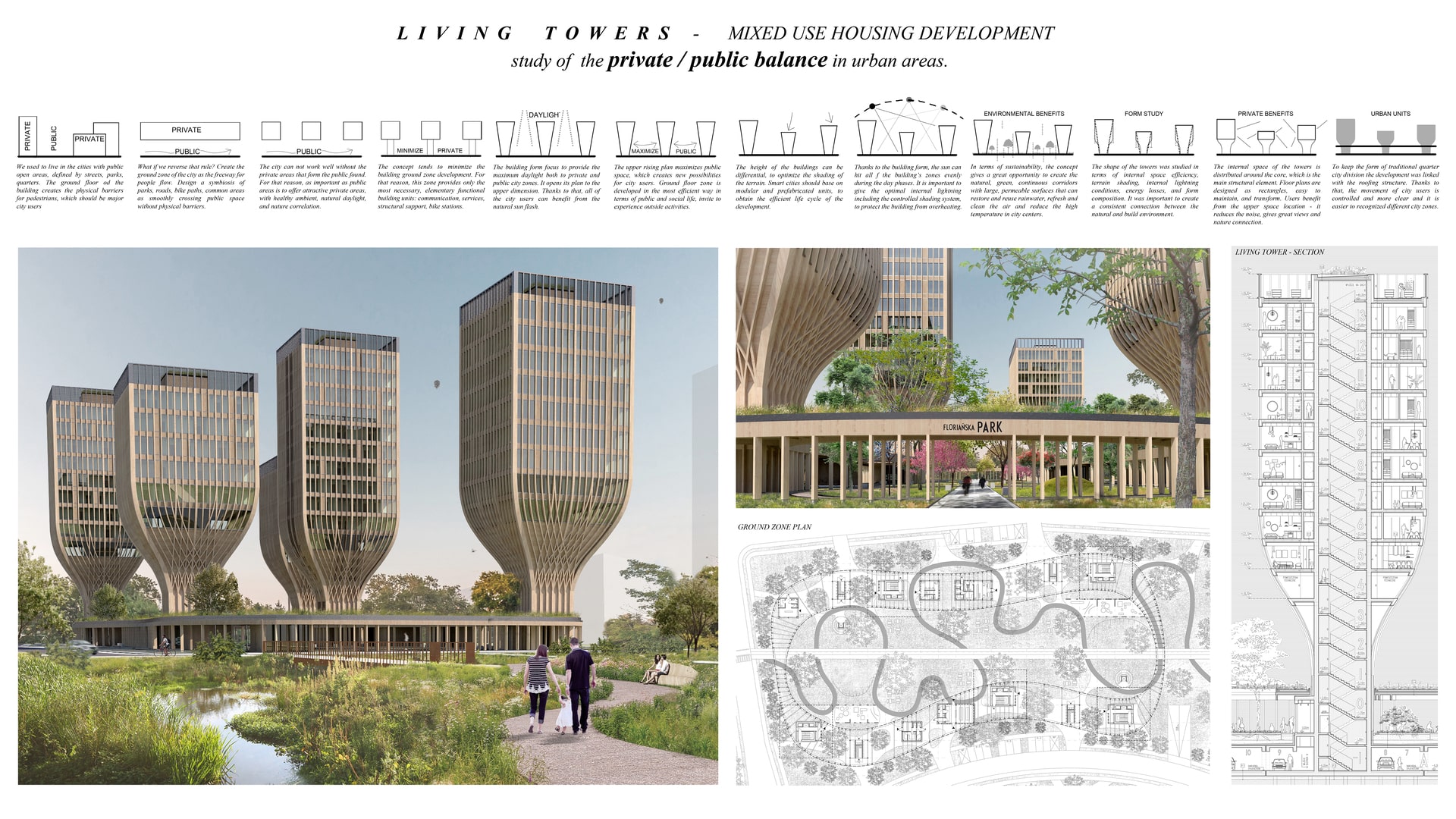Project Description
We used to live in the cities with public open areas, defined by streets, parks, quarters. The ground floor od the building creates the physical barriers for pedestrians, which should be major city users. Cities development focuses mainly on the private sector that is equipped with green parks and recreation areas. What if we reverse that rule? Create the ground zone of the city as the freeway for people flow. Design a symbiosis of parks, roads, bike paths, common areas as smoothly crossing public space without physical barriers. The city can not work well without the private areas that form the public found. For that reason, as important as public areas is to offer attractive private areas, with healthy ambient, natural daylight, and nature correlation. Both of those city components - private and public sector - should be designed with special care of daylight conditions. The concept tends to minimize the building ground zone development and maximize public green areas. For that reason, the ground zone provides only the most necessary, elementary functional building units: communication, services, structural support, bike stations. The building form focus to provide the maximum daylight both to private and public city zones. It opens its plan to the upper dimension. Thanks to that, all of the city users can benefit from the natural sun flash. The upper rising plan maximizes public space, which creates new possibilities for city users. Ground floor zone is developed in the most efficient way in terms of public and social life, invite to experience outside activities. The height of the buildings can be differential, to optimize the shading of the terrain. Smart cities should base on modular and prefabricated units, to obtain the efficient life cycle of the development. Thanks to the building form, the sun can hit all f the building’s zones evenly during the day phases. It is important to give the optimal internal lightning including the controlled shading system, to protect the building from overheating. In terms of sustainability, the concept gives a great opportunity to create the natural, green, continuous corridors with large, permeable surfaces that can restore and reuse rainwater, refresh and clean the air and reduce the high temperature in city centers. The shape of the towers was studied in terms of internal space efficiency, terrain shading, internal lightning conditions, energy losses, and form composition. It was important to create a consistent connection between the natural and build environment. The internal space of the towers is distributed around the core, which is the main structural element. Floor plans are designed as rectangles, easy to maintain, and transform. Users benefit from the upper space location - it reduces the noise, gives great views and nature connection. To keep the form of traditional quarter city division the development was linked with the roofing structure. Thanks to that, the movement of city users is controlled and more clear and it is easier to recognized different city zones.
